While there is much to debate about Andrew Dominik’s Blonde, one element is less contentious: the remarkable craft of bringing 1940s and 1950s Hollywood back to life. From frame-by-frame recreations of classic Marilyn Monroe scenes to the mountain of promotional materials featuring the star to lighting up the streets of Hollywood in period-accurate form, this work was no easy task—particularly under the meticulous vision of Dominik.
Working with the director for a year-and-a-half before one frame was filmed, Raoul Bolognini, President and CEO of Temprimental VFX, and visual effects supervisor Phillip Moses then transitioned directly from the shoot into an extensive post-production process during the pandemic. With their team responsible for over 350 visual effects shots, I had the chance to speak with the duo about their process and the demanding particularities of realizing an auteur’s desires.
The Film Stage: To start off: Andrew Dominik has such a strong vision for his films. What were the early conversations like with him and how did you develop a workflow and process for the visual effects?
Phillip Moses: I know Raoul was talking to Andrew, Brad [Pitt], and the team for a long time before they actually got into pre-production. At the outset Andrew had a very clear idea of what he wanted. You talk about having a particular vision, this guy has a very particular vision––not just what ultimately he wants in the scene or on the frame, but even what film format and what color process that each shot should have. When Raoul brought me on to the film I came in and they were renting a fairly large space for a production office—as you do. Every single wall was almost wallpapered with every image available of Marilyn Monroe. And it wasn’t just wallpaper. It was circles, lines connecting things, all of that. It was a mind map of somebody who had been sitting on this for ten years and had a very, very clear vision of what he wanted to do. And that really showed through pre-production all the way through, all the camera tests, everything. So he ultimately got what he wanted on frame.
Raoul Bolognini: As Philip said, it started a good year-and-a-half before we went into production. We’d actually finished working on an Annapurna movie and one of the executives at Annapurna asked us if we’d be interested in meeting Andrew to sort of talk about this very small Marilyn Monroe movie that he was doing. And I was like, “What’s not to love about Marilyn Monroe?” So off I went to this meeting at Plan B, and I sat in this conference room waiting for Andrew to come in. And he came in and we started chatting about the movie. Next thing I know, Brad Pitt walks in because he was one of the producers on the movie, and introduced himself to me, and Andrew turned to Brad and went, “Brad, meet my visual effects producer.” And that was it. It all started from there. Thank goodness we found Phillip as well because I think it was such a perfect match for Andrew and Phillip in terms of their personalities and creative vision. And we were really blessed to have the perfect team on the film, honestly.
There are so many shots I want to discuss to see how you pulled them off. To start, what was it like to put Ana de Armas in these classic films?
Moses: I could tell you the process and it’s kind of straightforward, but it got radically complicated because of the unique vision of our good friend Andrew. At the outset, you would think of it almost like a Forrest Gump shot where you’re just sort of inserting all that into the shot. However, what ultimately happened was Ana as Marilyn was interacting, having the coat taken off by the other actor, and all this stuff. So what the art department did was that they recreated the background, recreated the entire shot, and we brought in a stand-in to play this classic film actor. They come in and they do the entire scene. And worst-case scenario, that was it. We’ve recreated the scene.
However, Andrew was very, very keen to have that actor in there and up to the moment where we had to shoot the theater scenes––because all of this is playing on a theater where Marilyn is watching this happen––so instead of that being a green screen or a process screen or something that we composited in later, Andrew wanted this shot done and projected so that Ana’s reaction could be as authentic as possible, seeing herself up there and in this in this role. And so he pushed very hard down to the wire, like pulling producers’ teeth to get the rights to put this character in there. So what we did is: we took our shot and then we took a head replacement from the original film and put the actor back on there. So it just worked out seamlessly and it worked out, probably, at the 11th hour. And, like, we rendered it and put it on a drive and hand to the projectionist that day. Then, after all of that, we did additional compositing through the whole shot.
That’s the sort of dedication to the authentic moment Andrew wanted. That was my first clue that we were dealing with something a little extraordinary. Any other director would expect their actors to just sort of act through that scene, but Andrew wanted to make it as authentic as possible for Ana and to sort of create that moment and make it as real as possible. And I think he pulled it off. It is very rare when you have to do complicated compositing shots in production—things that you shot on day two that are going to play on day eight—and to just work through that whole process. And it was kind of intense.
Bolognini: There was one shot that sadly didn’t see the light of day, which would have been a phenomenal shot. And it was at the premiere and it was at the reception after the screening. And Phillip and the team pre-vised out this idea where Ana’s walking through the foyer and there are all these iconic Hollywood stars because they were all there to see that movie. And Andrew and Phillip just couldn’t find the footage to make these characters fit into how she would be walking through the foyer and being addressed by them. And it was a shame, actually, because we spent a long time pre-vising out the shot. I think you even you even shot it in green screen.
Moses: We did. It was one of those, “Let’s just shoot and see what we can do.”
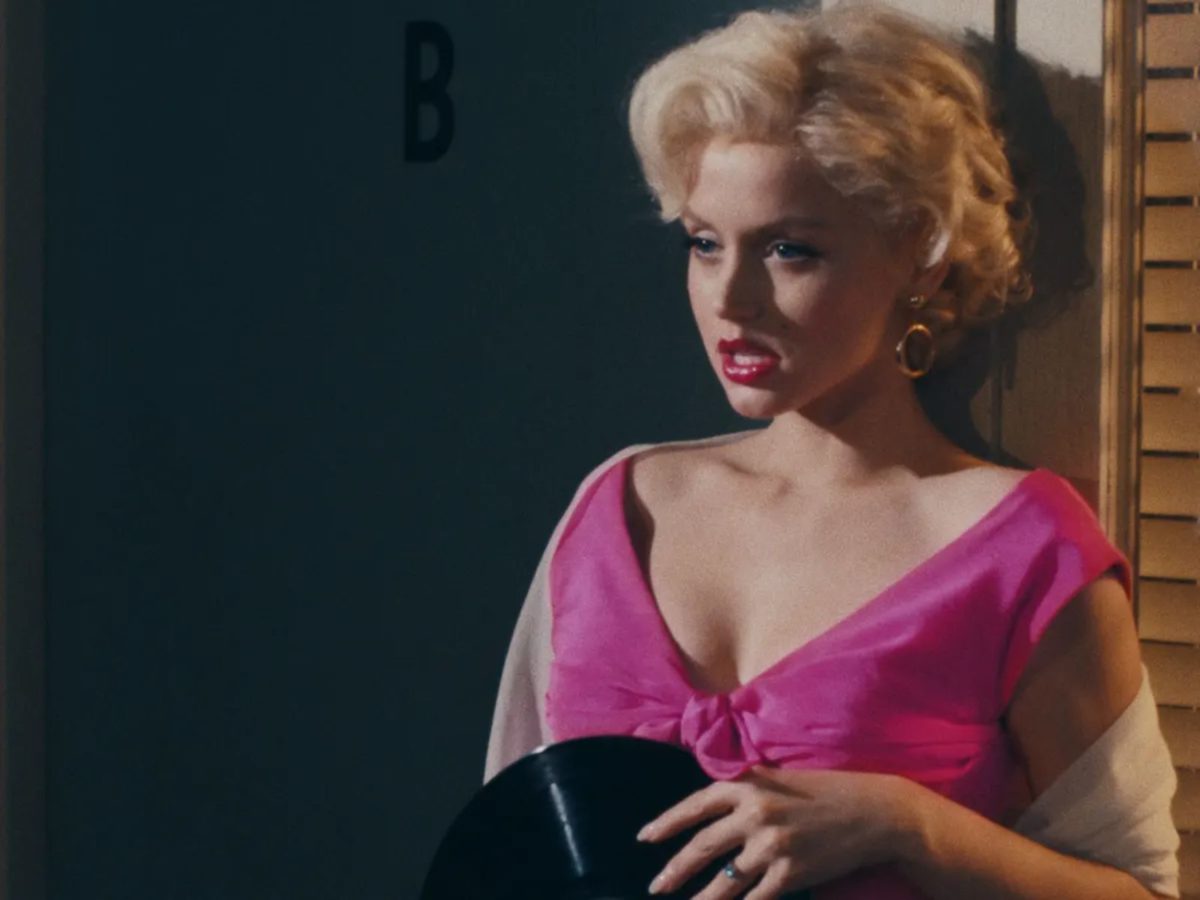
Tallking about some of those theater scenes, I love the incredible transition from when she’s having sex on the bed to the falls in the Niagara scene. What was the process of the visual effects for that shot?
Moses: In no uncertain terms, that’s what he wanted. He wanted giant Marilyn Monroe on the waterfall and have a transition from the bed into the waterfall. And on paper, you write that in the script and you’re done. But you could take that in in a number of different ways. I remember pitching something that was very artistic and stylized. He was like, “No, I want it to be giant Marilyn on a waterfall.” So everything from getting footage of Niagara Falls that would then cut into the Niagara trailer scene that it ultimately plays into—so where we’re going in very seamlessly through that process and then staging the shoot. And then, now, what do you do? Because you’ve got hands and sheets that are folding and interacting and behaving very much in a non-water way, even though we’ve set this up as a match jangle sort of thing.
And so working with the team to create some CG solutions, to get some nice little moments of interactive water and stuff like that, but not too much. We didn’t want to make a meal out of it. We’re sitting there scrutinizing the shot, but I know people are just going to be watching this straight through. And we didn’t want to draw attention to anything other than the whole spectacle. That one was definitely where you read it on paper, you scratch your head and say, “I think it’ll take this long.” And then off to the races you go and it’s more than you anticipated.
Bolognini: It could have been a really corny moment, but I actually think it was kind of a beautiful ending to that scene.
Speaking of the theater shots: there’s one shot where it’s very red and it’s pulling back from her. How much of that is in-camera? Were all those actors there, or are you visually filling them in?
Moses: You’ve unlocked post-traumatic stress. [Laughs] On any other film, what we probably would have done is we would have said, “Hey, let’s shoot a lighting pass on the stage and get a motion-control camera and we can get our crowd passed and all of that stuff and just get our lighting to match where we are.” With this budget—because this is just “a small little film about Marilyn”—it did not include the motion-control camera and it included a director who loves the interplay of light and lens. Normally, we would shoot all of that and then we would just clear everybody out and we would shoot a little light pass into the lens as an element. It’s not the way it went.
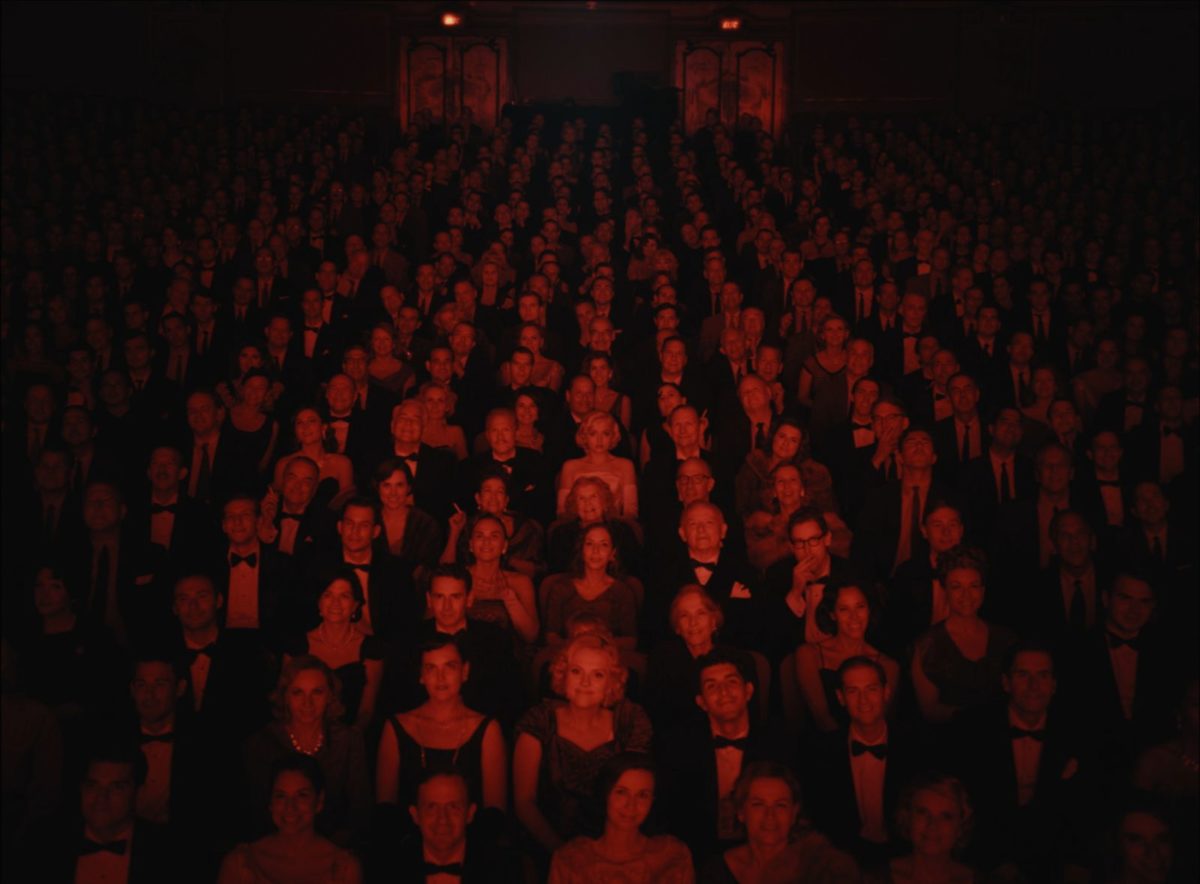
We basically did all of that with a zoom, so we had the time to zoom, but he wanted that lens in there blasting the entire time. And so what happens is we got different stitched crowd plates and people and stuff like that. And the lighting didn’t always match frame accurate with where they needed to be—so lots of re-timing, lots of hand re-lighting people. Then you come to find out that this extra is doing something that’s a little offensive. [Andrew is] very particular about what’s going on, on every part of the frame, even though you’re drawn into watching her and that lens and integrating all of that with everybody to get the flare just right. And so that was definitely one of the most non-obvious but very challenging moments.
I’m glad I asked. There’s so many different departments working at the top of their game in this film. Between the props and the historical things that are being recreated, clearly drawn from direct inspiration, how involved are you as a visual effects team in how those are presented in the final film? I’m thinking of the photo shoots as well and the many different elements there.
Moses: I think that there were two to three different categories of those types of shots. There were things where maybe we were just doing a little bit of something or maybe changing an eye color. It was kind of astounding. We’re just jumping all over Hollywood and Los Angeles when we were shooting, and to walk into a stage and just have that whole “Diamonds Are a Girl’s Best Friend” set rebuilt and watching that performance, you felt like you were sort of rewatching history rom a perspective you hadn’t seen before. So much of it was real and authentic and the art department did a fantastic job. You look at the trailer of Niagara, almost every single one of those shots was a frame-accurate recreation of the original, where we did very little, if anything––maybe a wig touch-up or a little paint fix.
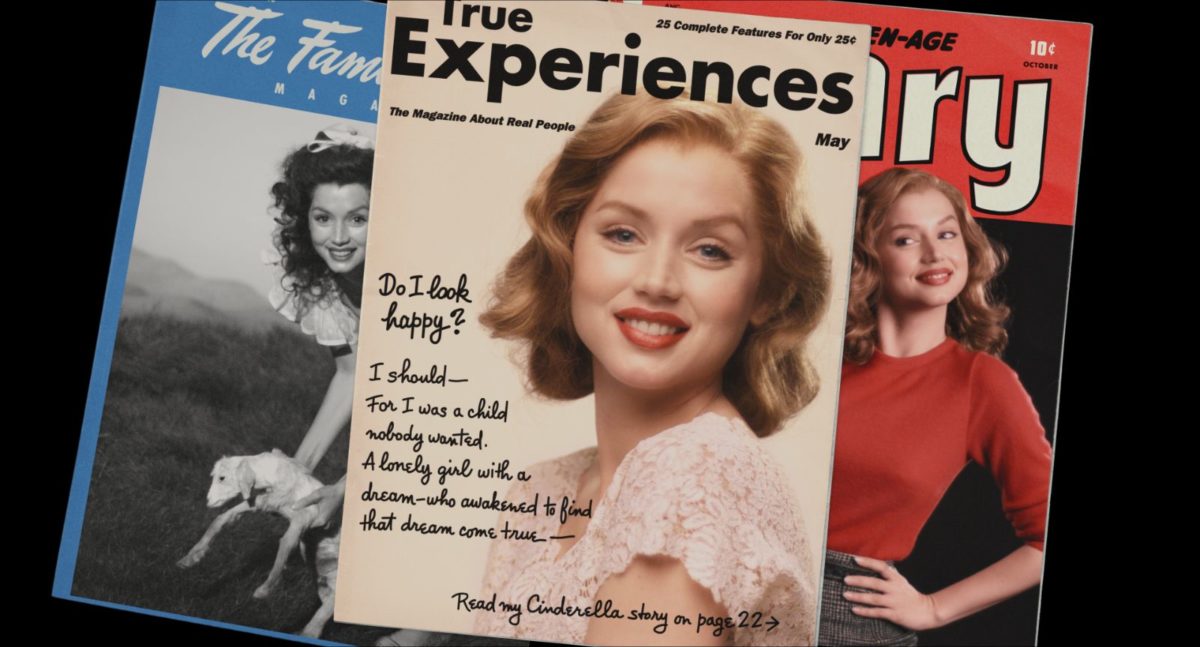
Then there’s something that was definitely more stylized or serendipitous. All of those photo shoots, we touched all of them with some process to them, but it was always to match an existing magazine and a cover and to give it a sense of realism. But all of the on-set and the photography and all of that was practical. And I would include one of the shots where Marilyn is at the top of some stairs at a hotel, and it was a perfect opportunity to rebuild that as a set for very little money and shoot it whenever and wherever. But it was the actual hotel, it was the actual steps, it was the actual banister. But in the 50-plus years that has transpired, things like ADA and safety regulations have changed that banister from being two rails to a whole bunch in there to keep kids from falling out of it. So we had to repaint all of her lower torso in that in that shot just to recreate that.
And then, the final category, there are the shots that going where we knew that we were trying to recreate something that you just can’t find. Like the angle behind the dress with that giant crowd. That was a crowd duplication and sort of matte-painting fabrication there on the lot. Then the giant billboards—the driving down Hollywood and seeing the giant billboard. There, that wasn’t Hollywood. That was San Pedro. And to go back into, like, film archives and photographs from the time and find buildings and some that still exist today, but their neighbors are long gone, and to recreate that whole two blocks environmentally accurate to the time, that was a very comprehensive 3D rebuild using the street and the lighting that was there. It kind of ran the gamut from a tiny paint fix to full CG extension, recreation, matching reflections on cars, and everything like that.
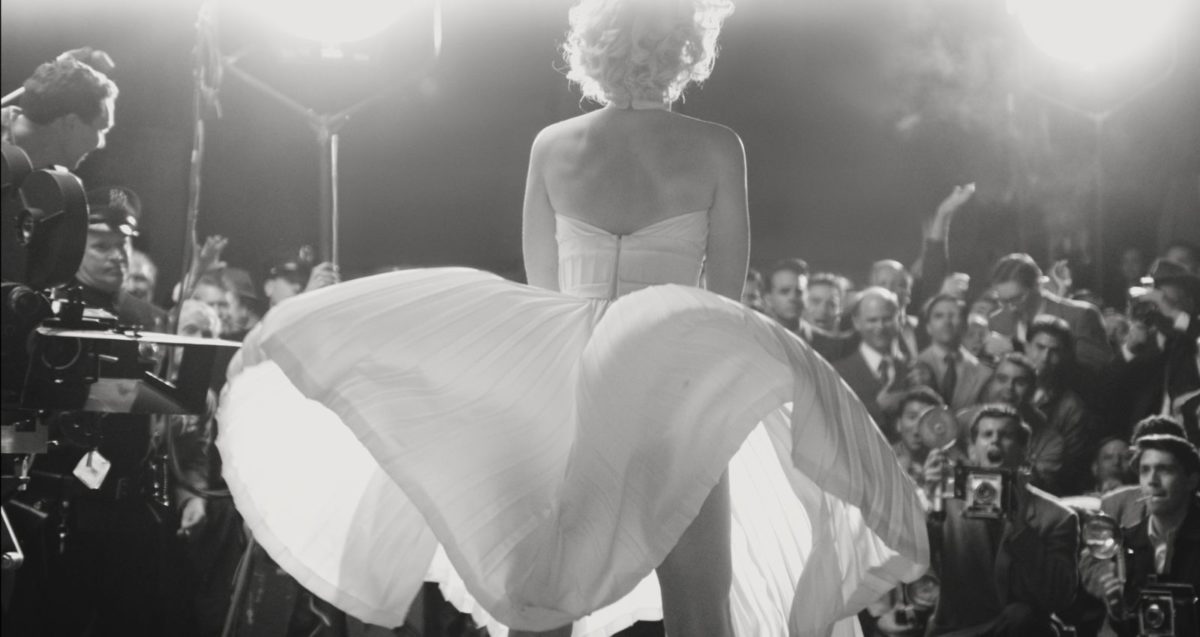
Bolognini: That was the whole balancing act with the budget of the film for visual effects. The challenge for us was that we didn’t have the traditional budget for visual effects for a film like this. It had to be done on a micro-scale. So having the globe at your fingertips in terms of casting different individual artists—artists from London, artists from Los Angeles, Europe, Italy, and all the artists in India as well—that did the painstaking paint work for one of those moments that Phillip just described with the staircase. With that shot you wouldn’t think so, but it was three months long of paint work just to get them back in that staircase. That’s the beauty of being on films like this from a visual-effects-producer standpoint: Andrew had spent ten years doing the research, his book of Marilyn when he opened it up to show us, to immerse us into that world was so well thought-out. And those departments that had already started thinking about the set builds and costume design, that’s all stuff that was shared with us at a very early stage because it helped us shape the visual effects budget so we could figure out what we were putting invisible effects to vs. obvious effects. That really was the great challenge of the film.
The only thing that I regret is that I would have liked us to have done a bit more of the outside 1950s world because those shots down Hollywood Boulevard––and certainly the one where the cars driving up towards the fire on the Hollywood Hills––those are exciting shots and seeing the evolution of those come together is just so why we do visual effects. But it’s peppered with a lot of visual effects that, for the most part, you don’t quite realize are visual effects. We had about 350-plus visual effects shots. Which is a decent size for a film like this.
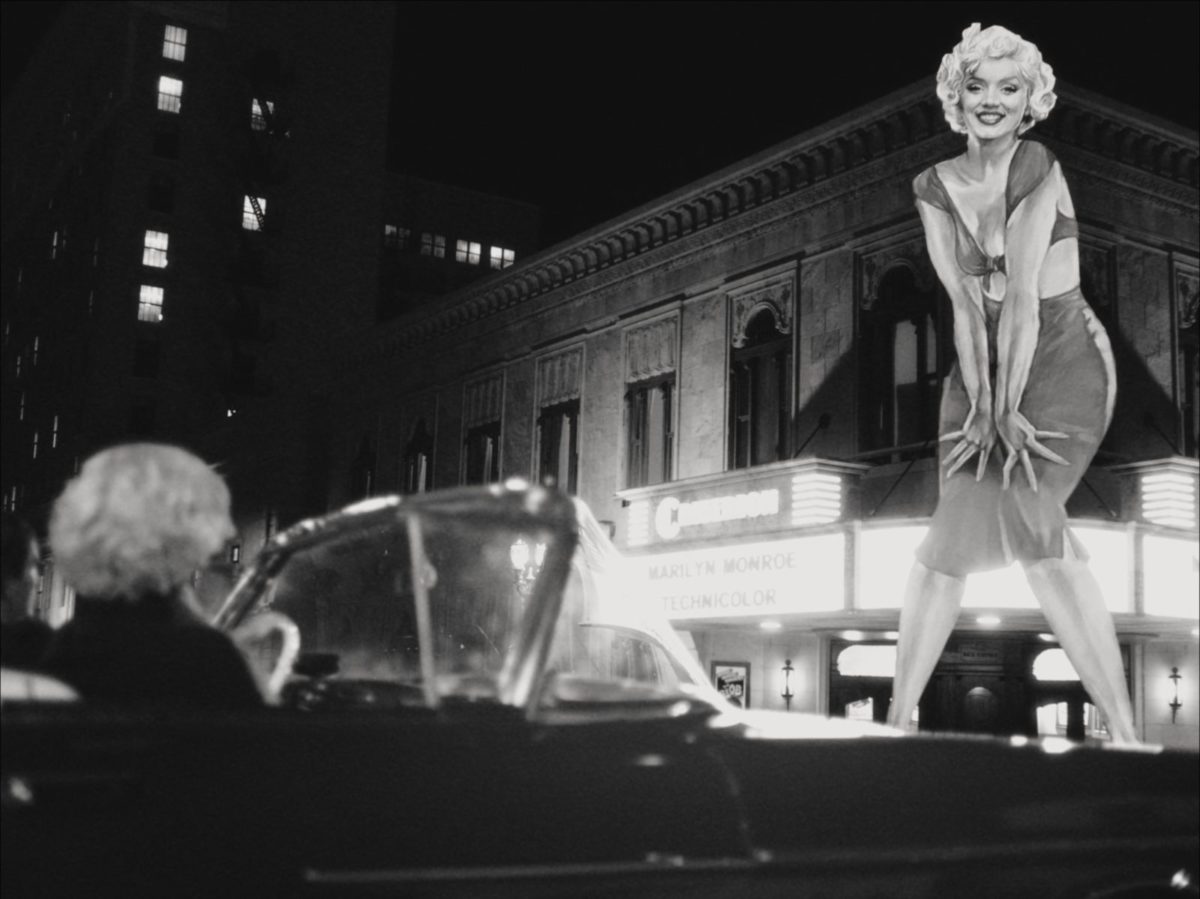
Wow. In terms of what you came to the film with, how did your impression of Marilyn Monroe change after seeing so much research detailing every bit of her life and career?
Bolognini: I was always charmed by the magic of 1950s Hollywood, all those iconic actors and the films. And then the more you read about the history of that, you understand the behind-the-scenes stuff. I think for Marilyn, the tragedy was… we all know, she was an incredibly talented artist, she was a warm woman. She craved love and she had a terrible upbringing with a schizophrenic mother. And that’s the sad part of doing something like this: it really drives that true story home. And sometimes it’s not exactly why we get into wanting to make films, but at the same time, having that knowledge and understanding of everything and really seeing the way that Andrew wanted to tackle the story as well.
We knew from the start that this wasn’t going to be in a happy musical with a happy ending. It was a tragic story and it was hitting a note that nobody had touched upon before. So I think, once you dial into that, it’s sort of really helped us––certainly Phillip and his team to drive the visual effects more towards that tone as opposed to one of happiness. But then there are those moments where you come out of it and you are in the “Diamonds” performance or you are in a scene from Some Like It Hot and it’s cool. But I think it’s a sad story that had to come out and it has come out and I know it hasn’t been embraced by everybody, but that’s the way life is.
Moses: From start to finish, it was a huge metamorphosis of just perception and the process. Never mind the content or the images. This film was shot before anybody even uttered the word coronavirus. We filmed and they go into editorial, and then, all of a sudden, the countries are locked down and the world is turned upside-down. And now we’re trying to work on a movie that is a very difficult edit over the course of a very long time. And so you got to live with it longer than you normally would. For me, reading the script for the first time, I always tell people it’s the most unique script I’ve ever read because it’s almost like a cacophony of images that are described on the page. And so as a visual-effects artist and a visual person, I’m just like “Wow, I really want to know how this director is wanting to see this come to bear.”
Everything that we do in visual effects and what we should be doing is in service of the story. The film is the boss. Do what we can do to be appropriate for the moment of the film. And yet this film goes in so many places emotionally. It was very kind of hard to track all of that. Once the thing is coming together and you’re understanding more what it is that you’re part of, to the point of everybody not getting the same reaction to it, it really is a lot of what you’re coming into this film with, and what you’re expecting to see and what what you’re looking for. There’s just little things, like I’m a father. And to see what her longing for a father––what huge emptiness was to her––to me it just became a great moral lesson for me as a dad. This is what I need to be, you know?
The other thing, just sort of broadly speaking, my appreciation for ’50s film and all of the classic films, so much has changed for the better, thank God. In the way artists are treated, and yet there is a fundamental similarity that so much of it is veneer as well. I love films that that force you to sort of look past that and see the humanity of the people behind it. That tale is timeless. Hopefully these tragedies don’t repeat themselves.
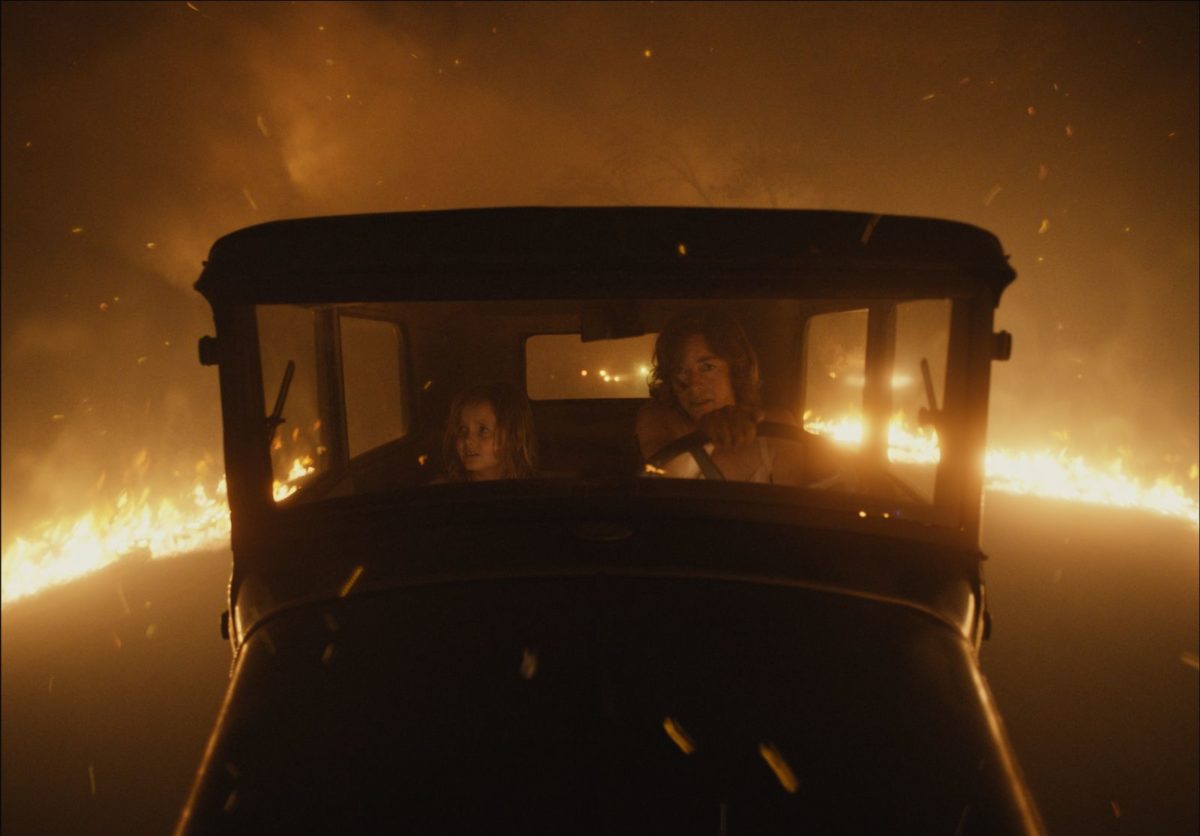
Lastly: is there any shot or sequence in the film that people might not think took many months to pull off that you want to shout out?
Moses: The main one that is not a huge part of the film—and yet it is just a massive amount of work—was driving up the mountain and the fire. All of that was filmed there in Los Angeles in the peak of fire season, and you couldn’t get a single flame bar up that mountain. So everything was lighting and practical smoke, shooting all night in the middle of the night with cars that could barely run. And yet you have an actress driving the car herself down a winding mountain road with breaks that were pretty sketchy. It was just an insane night of shooting and having to then go in and insert the fire and the flames and all of that stuff.
Then just the art direction behind the embers that Andrew had… any other film you would say “Okay, your spreadsheet says add nondescript embers.” And there was nothing nondescript about these embers. [Laughs] So there was definitely one where when you work with auteur like Andrew, somebody who is dedicated to the image, it forces you to pause and take more time artistically crafting something that in many cases might be just an element that you throw in for some background atmosphere. That wasn’t the case here. And so that was definitely the most underestimated sequence in the film.
Blonde is now on Netflix.
